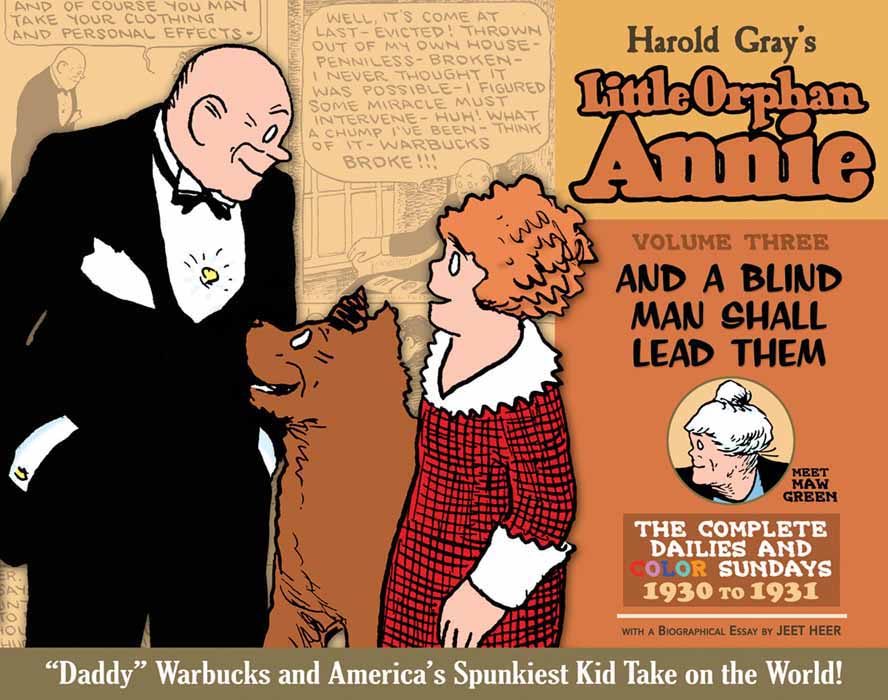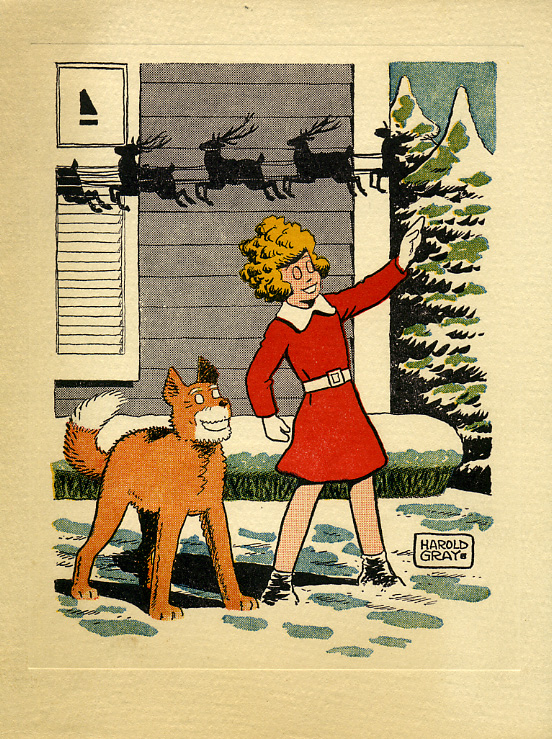This is a very unusual comic strip — it features a plucky young girl as it’s protagonist. She is, of course, an orphan who at the start leads a hard-luck life in an orphanage run by a mean matron who tries to instill in her charges the idea that they are second-class human beings.
Annie suffers her hardships with stoic good grace but never accepts second-class status — she believes in herself, is willing to stick up for herself, is capable of defending herself and others if they’re physically assaulted, and has an unshakeable spirit of personal honor and generosity.
Although the strip began in the mid 1920s, Annie would in time come to be seen as the personification of the decency and grit that got America through the Great Depression, and she is certainly one of the most powerful female icons in all of American art, a successor to Dorothy Gale and precursor to Velvet Brown.
I’m still working my way through the early years of the strip, which concentrate on Annie’s Dickensian travails as an orphan. Eventually she will find a powerful mentor and patron in Daddy Warbucks and go off on exotic adventures, carrying her heroic virtues into the wide world.
Heroic as she is, however, she’s also unassuming and funny, with a wry perspective on things, a distinctly American sort of hero — but always a girl to keep your eye on, a girl to rely on when the going gets tough.



Velvet Brown was in fact a British character, the heroine of Enid Bagnold’s wonderful, gritty novel “National Velvet” (1935). Just sayin.’
She became a female American icon when Elizabeth Taylor played her in a Hollywood movie. There is no doubt in my mind that Little Orphan Annie paved the way for her, as she did for Garland’s Dorothy, at MGM and with the public at large.